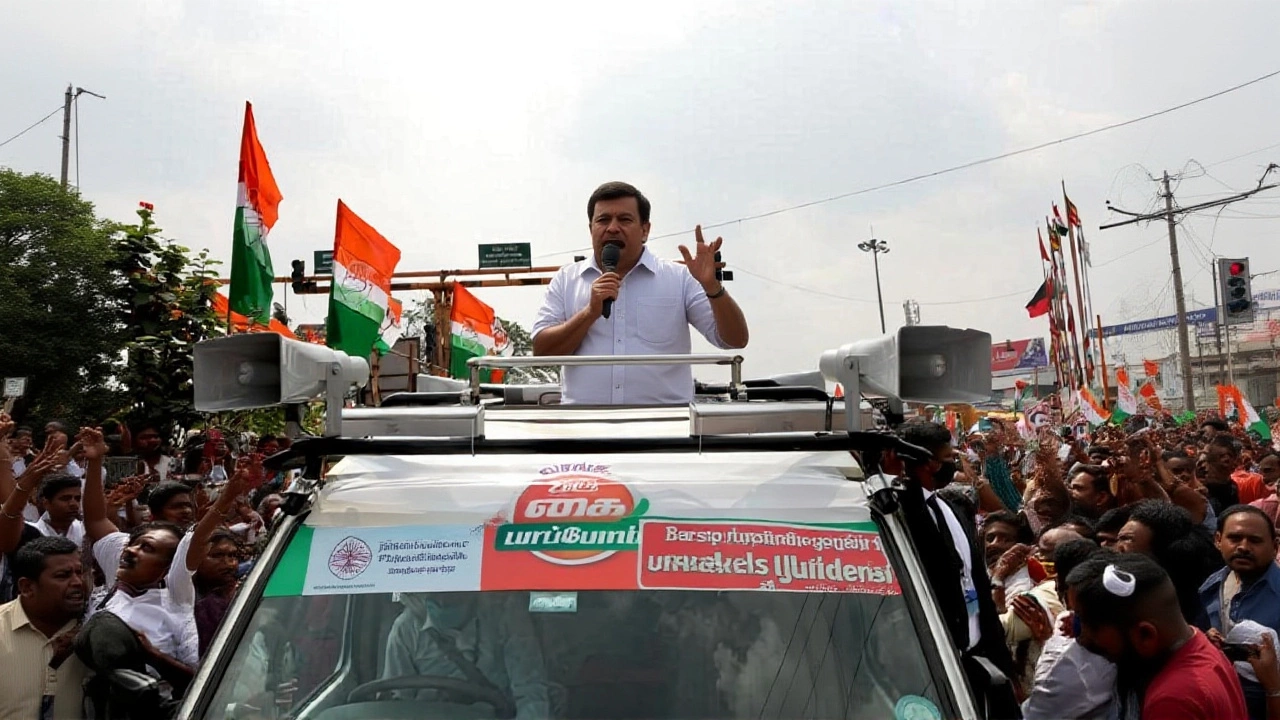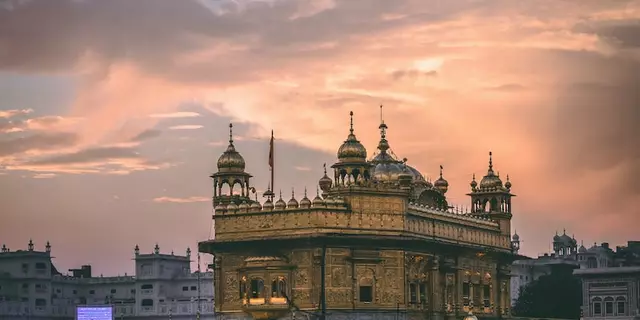When Cyclonic Storm Fengal slammed into the Tamil Nadu-Puducherry coast on November 30, 2024, it didn’t just bring rain—it drowned neighborhoods, swept away vehicles, and left 20 dead. The storm, which intensified from a depression off Sri Lanka’s coast just five days earlier, made landfall near Marakkanam and Karaikal with winds hitting 90 km/h, turning streets in Chennai into rivers and triggering landslides in the hills of Ooty. By December 4, the death toll stood at 16 in Tamil Nadu and four in Puducherry, with entire neighborhoods underwater and power outages lasting days. The India Meteorological Department (IMD) had warned of this coming, but the scale of destruction still stunned officials.
The Storm’s Path: From Depression to Disaster
The system that became Cyclonic Storm Fengal began as a low-pressure area over the southeast Bay of Bengal on November 25, 2024. By November 26, the Joint Typhoon Warning Center (JTWC) flagged it for potential cyclone formation. What followed was a slow, stubborn northward crawl—moving at just 9–13 km/h—parallel to the Coromandel Coast. Despite high wind shear that should’ve weakened it, Fengal defied expectations. On November 29, it officially became a cyclonic storm, named by the IMD, and by early morning on November 30, it peaked with 85 km/h sustained winds (3-minute average), just shy of a severe cyclonic storm.
Landfall came around 7:30 p.m. near the border of Puducherry and Tamil Nadu. The storm didn’t roar in like a monster—it surged, quietly and relentlessly. Water levels rose faster than drainage systems could handle. In Tiruvannamalai, 10 people died when their homes collapsed under the weight of saturated earth. In Chennai, four drowned in flooded basements near Mount Road and Gemini Flyover. One elderly man in Vellore was swept away while trying to cross a swollen drain.
Emergency Response: Police, Fishermen, and the Forgotten
As the wind howled, Senior Superintendent of Police (SSP) Kalaivanan of Puducherry personally inspected coastal barricades, ordering the closure of Marina Beach, Edward Elliot Beach, and Pattinapakkam. The message was clear: stay indoors. But not everyone could. Fishermen in Nagapattinam had already set out before the IMD’s final advisory. Three boats were lost. Their families still wait for bodies.
Emergency teams worked through the night, but roads were impassable. In Tiruvallur, a 12-year-old girl died after her house collapsed under a landslide triggered by 24 hours of nonstop rain. Hospitals ran out of oxygen tanks. Power lines snapped like twigs. The IMD used Doppler radars in Chennai and Sriharikota to track every gust, but real-time warnings didn’t reach the poorest hamlets.
Aftermath: Waterlogged Cities and a Broken Grid
By December 1, Fengal had weakened to a deep depression, but the damage was done. Chennai’s waterlogging was so severe that the city’s metro services shut down for 48 hours. In Puducherry, 70% of homes lost electricity. The state government declared a state of emergency, but relief trucks got stuck in mud near Mayiladuthurai. Volunteers carried bottled water on foot.
By December 3, the remnants of Fengal emerged over coastal Karnataka, crossed into the Arabian Sea, and finally dissipated on December 4. But the rain didn’t stop. The IMD warned of more heavy showers over the next 24 hours—just as communities were trying to clean up.

Why This Storm Was Different
Unlike Cyclone Vardah in 2016, which hit Chennai with a single punch, Fengal lingered. It didn’t just dump rain—it soaked the soil for days, turning dry land into swamps. The 20 deaths weren’t from a single wave or roof collapse. They were from systemic failure: inadequate drainage, poorly maintained embankments, and delayed evacuations in rural zones.
Experts say climate change is making these slow-moving storms more common. “We’re seeing systems stall over the Bay of Bengal,” says Dr. Ravi Menon, a climatologist at the Indian Institute of Science. “Warmer waters give them more energy, but weaker upper-level winds let them hang around. That’s deadly.”
What Comes Next?
The Tamil Nadu government has promised to rebuild drainage systems in 12 flood-prone districts by March 2025. But there’s no timeline for retrofitting old homes or relocating coastal families. Meanwhile, the IMD is upgrading its radar network, adding two new X-band systems in Kanyakumari and Tirunelveli.
For now, the focus is on recovery. Over 80,000 people remain displaced. Schools are closed. The fishing industry—critical to coastal livelihoods—is paralyzed. And as the monsoon season ends, everyone wonders: will the next storm come sooner?
Frequently Asked Questions
How many people were affected by Cyclone Fengal beyond the fatalities?
Over 80,000 people were displaced across Tamil Nadu and Puducherry, with more than 120,000 homes damaged or destroyed. Emergency shelters housed nearly 45,000 residents, mostly in schools and community centers. The state government reported that 67 villages in Tiruvannamalai and Nagapattinam districts were completely cut off for over 72 hours due to flooded roads and downed power lines.
Why did Chennai flood so badly despite being a major city?
Chennai’s drainage infrastructure hasn’t kept pace with urban sprawl. Many stormwater channels were paved over or encroached upon for construction. The Adyar and Cooum rivers, which should carry floodwater to the sea, are now choked with waste and silt. During Fengal, rainfall exceeded 300 mm in 24 hours—double the capacity of the city’s aging drains. Even the metro’s underground stations flooded, a sign of how deeply the system failed.
What role did the India Meteorological Department play in warning residents?
The IMD issued its first cyclone alert on November 27 and upgraded it to ‘very severe’ by November 29. Warnings were broadcast via SMS, TV, and radio, and 18,000 people were evacuated from coastal zones. But many rural residents didn’t receive alerts due to poor mobile connectivity. The IMD’s radar network was effective, but its outreach to informal settlements and fishing communities remains inconsistent.
Were airlines and trains affected by the storm?
Yes. Over 120 flights at Chennai International Airport were canceled between November 30 and December 2. Southern Railway suspended 47 trains, including the Chennai–Kolkata Express. Several domestic carriers, including IndiGo and SpiceJet, diverted flights to Bangalore and Hyderabad. Passengers stranded in Chennai reported delays of up to 72 hours before flights resumed. Rail restoration began on December 3, but some routes remained closed until December 6 due to track damage.
Is there a pattern to cyclones hitting Tamil Nadu and Puducherry?
Yes. The Coromandel Coast is one of India’s most cyclone-prone regions. Between 2000 and 2024, 14 major cyclones made landfall here, including Cyclone Gaja (2018) and Cyclone Nivar (2020). Most occur between October and December, when sea surface temperatures peak. Climate models predict a 30% increase in intense cyclones over the Bay of Bengal by 2050, making Tamil Nadu and Puducherry even more vulnerable.
What can residents do to prepare for the next storm?
Residents should register for IMD’s SMS alerts, keep emergency kits with food, water, and medications, and identify local evacuation centers. Avoid building near riverbanks or low-lying areas. If you live in a coastal village, consider elevating your home’s foundation. The Tamil Nadu government offers subsidies for cyclone-resistant housing—but only 12% of eligible households have applied so far. Awareness is the first line of defense.





